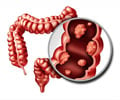Researchers have found new images providing fundamental insights into how cancer cells die.
Researchers have found new images providing fundamental insights into how cancer cells die.
New images providing fundamental insights into how cancer cells die have revealed that there is a dramatic increase in the viscosity, or 'gloopiness', of different parts of cancer cells, when they are blasted with light-activated cancer drugs.The images reveal the physical changes that occur inside cancer cells at the time when they are dying because of Photodynamic Therapy (PDT), a cancer treatment that uses light to activate a drug that creates a short-lived toxic type of oxygen, called singlet oxygen, which kills cancerous cells.
The researchers behind this study say that revealing what happens to viscosity within a dying cancer cell is important because it may help better understand how cells function and which factors are important for controlling reactions inside cells.
And this could ultimately help scientists design more efficient drugs for Photodynamic Therapy and other treatments.
Also, the research holds significance because these are the first ever real-time maps showing viscosity changing over a period of time inside a cell during a biologically important process like cell death.
Lead author Dr Marina Kuimova, from Imperial College London's Department of Chemistry, has revealed that previous studies have shown that the viscosity of human cells and organs also changes in patients with diseases, including diabetes and atherosclerosis.
Advertisement
She added: "Knowing more about these changes, and being able to map them when they occur in all kinds of different scenarios, from dying cancer cells, to diseased blood cells, could help us to better understand how some diseases and their treatments affect cell and organ function."
Advertisement
Made of a molecule with a spinning component like a rotor, the drug emits different wavelengths of light depending on the viscosity of its surroundings.
The changing wavelengths of light emitted during experiments, and captured over a period of 10 minutes, showed that once the PDT drug was activated, the level of viscosity inside the cell increased dramatically.
According to the researchers, the toxic oxygen molecules released into the cell causes the increasing 'gloopiness'.
In their opinion, increased levels of viscosity might even contribute directly to the cancer cell's further deterioration by slowing down vital communication and transport processes inside the cell.
However, the researchers noted that as viscosity in the cancerous cell increases, the toxic oxygen molecule's mission to kill the cell is slowed down too.
The study has been published in the journal Nature Chemistry.
Source-ANI
ARU/L














